Minimally Invasive Foot Surgery
Welcome to Luxe Foot Surgery’s comprehensive guide to our Minimally Invasive Foot Surgery services, located in the heart of Miami. In this detailed overview, we’ll provide valuable information, including costs and prices, for our wide range of cutting-edge procedures.
Through easy-to-understand tables and in-depth insights, we aim to help you make the best decision for your foot health by showcasing the benefits of our advanced treatments. Experience the difference at Luxe Foot Surgery in Miami – where your well-being is our top priority.
Book Your Free Consultation

What is Minimally Invasive Foot Surgery?
Minimally Invasive Foot Surgery (MIFS) refers to a range of advanced surgical procedures used to treat various foot conditions with minimal trauma to the surrounding tissues. These techniques involve small incisions, specialized instruments, and state-of-the-art technology to access and treat the affected area precisely, reducing pain, scarring, and recovery time compared to traditional open surgery.
MIFS offers numerous benefits, including reduced postoperative pain, faster healing, lower risk of complications, and a quicker return to daily activities. This approach can address a wide range of foot problems, such as bunions, hammer toes, plantar fasciitis, Achilles tendon injuries, and more. In the article, we will delve into the details of various Minimally Invasive Foot Surgery procedures, offering insights into their applications, benefits, and what to expect during treatment.
It is essential to consult with a qualified foot and ankle specialist to determine if minimally invasive foot surgery is the most appropriate treatment for your specific condition.
An Overview of Minimally Invasive Foot Surgery: A Comprehensive Table of Procedures
| Minimally Invasive Procedure | Operation Time | Approximate Cost | Recovery Time | Description |
|---|---|---|---|---|
| Minimally Invasive Bunion Surgery | 60-90 min | $4,000-$7,000 | 4-6 weeks | A procedure to correct the misaligned joint of the big toe, relieving pain and discomfort. |
| Minimally Invasive Hammer Toe Correction | 30-60 min | $2,000-$4,000 | 2-4 weeks | Surgery to straighten bent toe joints, improving function and appearance. |
| Plantar Fasciitis Release | 30-60 min | $3,000-$6,000 | 2-6 weeks | A treatment for chronic heel pain by releasing the tight plantar fascia ligament. |
| Minimally Invasive Achilles Tendon Repair | 60-120 min | $5,000-$10,000 | 6-12 weeks | Surgery to repair a ruptured or torn Achilles tendon, restoring function and strength. |
| Flatfoot Correction | 30-60 min | $3,500-$6,000 | 4-8 weeks | A minimally invasive procedure to correct flatfoot deformity by stabilizing the ankle joint. |
| Minimally Invasive Neuroma Excision | 30-60 min | $3,000-$5,000 | 2-4 weeks | Removal of a painful nerve growth between the toes, alleviating pain and discomfort. |
| Ankle Arthroscopy | 60-120 min | $5,000-$10,000 | 4-12 weeks | A minimally invasive procedure to diagnose and treat ankle joint problems. |
| Subtalar Joint Fusion | 90-120 min | $7,000-$12,000 | 8-16 weeks | Fusion of the subtalar joint to alleviate pain and restore stability in the foot and ankle. |
| Metatarsal Osteotomy | 60-90 min | $3,000-$6,000 | 4-8 weeks | Surgical realignment of the metatarsal bones to correct deformities and alleviate pain. |
| Calcaneal Osteotomy (Heel Realignment) | 60-90 min | $5,000-$8,000 | 8-12 weeks | Surgery to realign the heel bone, improving foot alignment and function. |
| Corn Removal Surgery | 30-60 min | $2,000-$4,000 | 2-4 weeks | Surgical removal of corns, relieving pain and discomfort. |
| Toe Straightening Surgery | 60-90 min | $3,000-$6,000 | 4-8 weeks | Surgery to straighten toes, improving alignment and function. |
| Toe Lengthening Surgery | 90-120 min | $5,000-$8,000 | 6-12 weeks | Surgical procedure to lengthen toes, addressing functional issues. |
| Toe Shortening Surgery | 60-90 min | $4,000-$7,000 | 4-6 weeks | Surgical procedure to shorten toes, improving balance and comfort. |
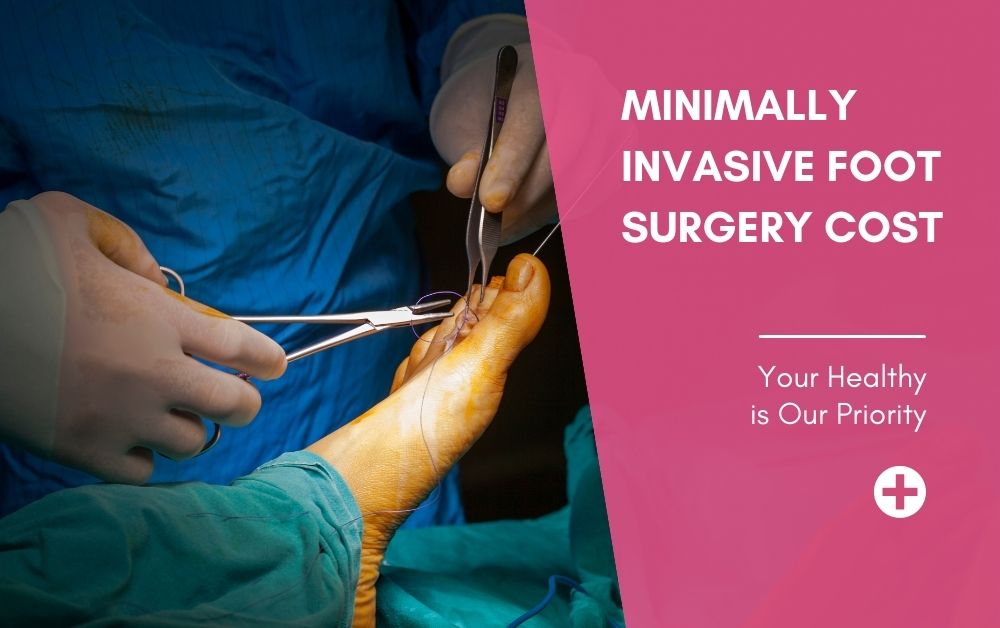
How much does Minimally Invasive Foot Surgery cost in Miami?
Minimally invasive foot surgery in Miami typically costs between $2,000 and $12,000 or more, depending on several factors, including:
Type of Procedure: The specific minimally invasive foot surgery being performed can greatly impact the cost, as some procedures are more complex and require more specialized techniques.
Complexity of the Case: The severity of the foot condition and the individual patient’s circumstances can affect the complexity of the surgery, which can influence the cost.
Surgical Approach: Different minimally invasive surgical approaches, such as arthroscopy, endoscopy, or percutaneous techniques, can affect the cost.
Expertise and Experience of the Surgeon: Surgeons with more experience and skill in the field of minimally invasive foot surgery may charge higher fees for their services, but they may also be more capable of providing effective and efficient treatment.
Accompanying Medical Conditions: Patients with certain medical conditions, such as diabetes or peripheral vascular disease, may require more specialized care during the surgery, which can impact the cost.
Geographical Location: The cost of living and the general price level in Miami can also influence the cost of minimally invasive foot surgery.
It is essential to consult with a qualified foot and ankle specialist in Miami to get a more accurate cost estimate tailored to your specific situation. Additionally, inquire about insurance coverage, payment plans, and financing options to help manage the expenses associated with surgery.
Here is a rough estimate of costs for some common minimally invasive foot surgery procedures in Miami:
- Minimally Invasive Bunionectomy: $4,000 – $7,000
- Minimally Invasive Hammer Toe Correction: $2,000 – $4,000
- Plantar Fasciitis Release: $3,000 – $6,000
- Minimally Invasive Achilles Tendon Repair: $5,000 – $10,000
- HyProCure Flatfoot Correction: $3,500 – $6,000
- Minimally Invasive Neuroma Excision: $3,000 – $5,000
- Ankle Arthroscopy: $5,000 – $10,000
- Subtalar Joint Fusion: $7,000 – $12,000
- Metatarsal Osteotomy: $3,000 – $6,000
- Calcaneal Osteotomy (Heel Realignment): $5,000 – $8,000
Costs After Minimally invasive foot surgery
After undergoing a minimally invasive foot surgery, there are several potential costs you may need to consider. These additional expenses can vary significantly depending on individual circumstances, insurance coverage, and geographical location. Here’s a rough estimate for some of the potential postoperative costs:
- Postoperative care (follow-up appointments): $100 – $300 per visit. This includes follow-up appointments with your surgeon to monitor your progress, remove stitches, and ensure proper healing. The cost of these visits may or may not be included in the initial surgical fee.
- Medications: $20 – $150, depending on the type and duration of medications prescribed. You may be prescribed pain medications, anti-inflammatory drugs, or antibiotics to manage pain and prevent infection following your surgery.
- Physical therapy: $50 – $150 per session, with multiple sessions often needed. Depending on the type of surgery and your individual recovery, you may require physical therapy to regain strength, flexibility, and range of motion in your foot.
- Assistive devices: $30 – $200, depending on the specific device and quality. You might need to use crutches, a walking boot, or a brace temporarily after surgery.
- Compression stockings or bandages: $15 – $100, depending on the type and quality. These may be required to manage swelling and promote healing.
In rare cases, complications or unsatisfactory results may require additional surgery or treatment, leading to further costs.
Please keep in mind that these cost estimates are approximate and can vary widely. To get a more accurate estimate tailored to your specific situation, consult with your surgeon and insurance provider about the expected costs associated with your minimally invasive foot surgery and the necessary postoperative care.
Financing and Insurance Options at Luxe Foot Surgery
Luxe Foot Surgery understands that managing the cost of minimally invasive foot surgery is essential for patients. We offer various financing and insurance options to help make the treatment more accessible and affordable.
Benefits of Minimally Invasive Foot Surgery
Minimally invasive foot surgery offers numerous benefits for patients seeking effective treatment for foot conditions. Some of the key advantages of this advanced surgical approach include:
Reduced postoperative pain: Minimally invasive techniques involve smaller incisions and less tissue disruption, resulting in decreased postoperative pain and discomfort compared to traditional open surgery.
Faster recovery time: With minimally invasive foot surgery, patients often experience shorter recovery periods. The reduced trauma to the surrounding tissues allows for faster healing and a quicker return to normal activities.
Minimal scarring: The smaller incisions used in minimally invasive procedures result in smaller scars, which are less noticeable and can lead to increased cosmetic satisfaction.
Lower risk of complications: By minimizing tissue damage and trauma, minimally invasive foot surgery reduces the risk of complications such as infection, excessive bleeding, and nerve damage.
Improved precision and accuracy: Advanced surgical tools and imaging technology allow surgeons to perform procedures with enhanced precision, ensuring targeted treatment and optimal outcomes.
Preserved function and aesthetics: Minimally invasive techniques aim to preserve the natural function and aesthetics of the foot, minimizing the need for extensive tissue removal or restructuring.
Outpatient procedure: Many minimally invasive foot surgeries can be performed on an outpatient basis, allowing patients to return home on the same day of the procedure and recover in the comfort of their own surroundings.
Personalized treatment options: Minimally invasive foot surgery offers a wide range of procedures tailored to address specific foot conditions, providing patients with personalized treatment options that align with their unique needs.
It is important to consult with a qualified foot and ankle specialist to determine if minimally invasive foot surgery is suitable for your specific condition. They can provide personalized recommendations and guide you towards the most effective and least invasive treatment approach.
Popular Minimally Invasive Foot Surgery Procedures
Minimally invasive foot surgery encompasses a variety of procedures aimed at addressing different foot conditions. Some of the popular minimally invasive foot surgery procedures include:
Bunion Surgery (Bunionectomy): This procedure involves correcting a misaligned joint of the big toe by removing the bony prominence and realigning the bones to alleviate pain and improve the foot’s appearance.
Hammer Toe Correction: Minimally invasive techniques can be used to straighten bent toe joints, providing pain relief and improving the alignment and functionality of the toes.
Plantar Fasciitis Release: This procedure targets chronic heel pain caused by inflammation of the plantar fascia ligament. Minimally invasive techniques can be used to release tension in the ligament, reducing pain and improving mobility.
Achilles Tendon Repair: Minimally invasive surgery can be utilized to repair a ruptured or torn Achilles tendon. This procedure aims to restore the strength and functionality of the tendon, facilitating proper movement and reducing pain.
Flatfoot Correction (HyProCure): Minimally invasive techniques, such as the HyProCure procedure, can correct flatfoot deformity by stabilizing the ankle joint and improving foot alignment and function.
Neuroma Excision (Morton’s Neuroma): This procedure involves removing a painful nerve growth, typically between the toes, to relieve pain and discomfort.
Ankle Arthroscopy: Minimally invasive arthroscopy allows for diagnostic evaluation and treatment of ankle joint issues, such as cartilage damage or loose bodies, using small incisions and specialized instruments.
Subtalar Joint Fusion: This procedure involves fusing the subtalar joint to alleviate pain and improve stability in the foot and ankle, often for conditions such as arthritis or severe foot deformities.
These are just a few examples of the minimally invasive foot surgery procedures available. Each procedure aims to address specific foot conditions while minimizing tissue damage and promoting faster recovery. Consult with a foot and ankle specialist to determine the most suitable procedure for your individual needs.
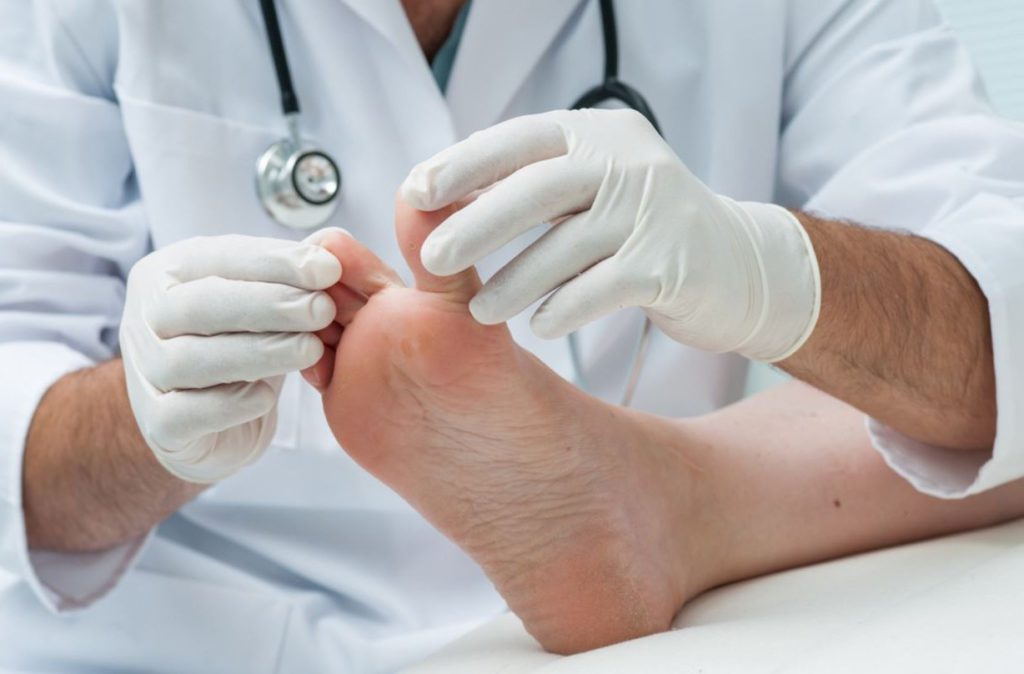
Ideal Candidates for Minimally Invasive Foot Surgery: Who Can Benefit from this Advanced Approach?
A good candidate for minimally invasive foot surgery is typically someone who:
Has a foot condition that can be effectively treated through minimally invasive techniques: Conditions such as bunions, hammer toes, plantar fasciitis, Achilles tendon injuries, or flatfoot deformities are among the common conditions suitable for minimally invasive foot surgery.
Has tried conservative treatments without significant improvement: Candidates have likely exhausted non-surgical options like physical therapy, orthotics, medication, or lifestyle modifications with limited success in alleviating their foot condition.
Is in good overall health: Patients should generally be in good health to undergo surgery, without underlying medical conditions that may increase the risks associated with anesthesia or the surgical procedure itself.
Is committed to following postoperative instructions: Successful outcomes rely on adhering to postoperative care guidelines, including wound care, physical therapy, and activity restrictions. Candidates should be willing to actively participate in their recovery process.
Has realistic expectations: Candidates should have reasonable expectations regarding the potential benefits and limitations of minimally invasive foot surgery. Open communication with the surgeon can help set appropriate expectations.
Ultimately, it is essential to consult with a qualified foot and ankle specialist who can evaluate your specific condition, medical history, and individual circumstances to determine if you are a suitable candidate for minimally invasive foot surgery. They will consider various factors to provide personalized recommendations for the most appropriate treatment approach for you.
Minimally Invasive Flat Foot Surgery - Procedure, Recovery, and Costs
| Procedure | Operation Time | Recovery Time | Approximate Cost | Description |
|---|---|---|---|---|
| Minimally Invasive Flat Foot Surgery | Varies | 4-12 weeks | $4,000-$10,000 | This procedure utilizes small incisions and specialized techniques to correct flat foot deformity, improve foot alignment, and alleviate associated symptoms. |
Have a Consultation With Your Surgeon in Miami Before the Operation
Choose Luxe Foot Surgery for your minimally invasive foot surgery needs. Our team of highly skilled specialists offers expertise and specialization in a wide range of procedures. With state-of-the-art technology, we provide personalized care and comprehensive support from evaluation to rehabilitation. Our track record of patient satisfaction speaks for itself. Trust Luxe Foot Surgery to deliver exceptional results and help you regain optimal foot health and function. Schedule your consultation today and experience the difference of our excellence in care.
Before booking your minimally invasive foot surgery at Luxe Foot Surgery, we encourage you to schedule a consultation with our team. During this consultation, we will discuss the benefits, risks, and recovery process associated with corn removal surgery. Dr. Lopez DPM, our experienced and professional foot specialist, will provide personalized recommendations based on your specific condition.
Frequently Asked Questions
Like any surgical procedure, there are potential risks and complications associated with Minimally Invasive Foot Surgery, although they are generally less common compared to traditional surgery. These may include infection, nerve damage, blood clots, delayed healing, or recurrence of the condition. It is important to discuss these potential risks with your surgeon before undergoing the procedure.
The length of the recovery period can vary depending on the specific procedure and individual factors. However, in general, patients can expect a shorter recovery period compared to traditional surgery, typically ranging from a few weeks to a few months. It is important to follow the postoperative instructions provided by your surgeon for a successful recovery.
Minimally Invasive Foot Surgery is used to treat a variety of conditions such as bunions, hammer toes, heel spurs, Morton’s neuroma, plantar fasciitis, and foot deformities.
The type of anesthesia used during Minimally Invasive Foot Surgery can vary depending on the specific procedure and patient’s needs. In some cases, local anesthesia with sedation may be sufficient, while in others, general anesthesia may be preferred. Your surgeon will discuss the anesthesia options with you prior to the surgery.
In many cases, Minimally Invasive Foot Surgery is performed on an outpatient basis, meaning you can go home the same day of the procedure. However, in some cases or if additional monitoring is required, an overnight stay in the hospital may be recommended. Your surgeon will advise you on the expected duration of your hospital stay.
The recovery time and return to normal activities can vary depending on the specific procedure and individual healing factors. Generally, patients can gradually resume light activities within a few days to a week after surgery. However, more strenuous activities and sports may need to be avoided for several weeks or as advised by your surgeon.
Physical therapy may be recommended as part of the recovery process for some patients undergoing Minimally Invasive Foot Surgery. It can help improve strength, flexibility, and overall function of the foot. Your surgeon will determine if physical therapy is necessary in your case and provide guidance on when to start and what exercises to perform.
In many cases, the results of Minimally Invasive Foot Surgery are long-lasting or permanent. However, the success and longevity of the results can depend on various factors, including the specific condition being treated, the surgical technique used, and individual healing and lifestyle factors. Your surgeon will discuss the expected outcomes and potential long-term effects with you before the surgery.
Preparing for Minimally Invasive Foot Surgery typically involves following your surgeon’s instructions. This may include stopping certain medications or supplements, arranging for someone to drive you home after the procedure, fasting before surgery, and wearing loose, comfortable clothing. Your surgeon will provide you with specific pre-operative instructions tailored to your needs.
During the surgery, you will typically be under anesthesia and should not feel any pain. After the procedure, it is normal to experience some discomfort or mild pain, which can be managed with prescribed pain medications. Your surgeon will provide you with appropriate pain management instructions and medications to ensure your comfort during the recovery period.
Following Minimally Invasive Foot Surgery, your surgeon will provide you with specific post-operative instructions. These instructions may include elevating the foot, keeping weight off the foot, wearing a special shoe or boot, avoiding certain activities or movements, and taking any prescribed medications. It’s important to follow these instructions carefully to promote proper healing and minimize the risk of complications.
The timeline for seeing the results of Minimally Invasive Foot Surgery can vary depending on the specific procedure and individual factors. In some cases, you may notice immediate improvements, while in others, it may take several weeks or months for the full benefits to become apparent. Your surgeon will provide you with a timeline for expected results based on your specific condition.
Latest Articles
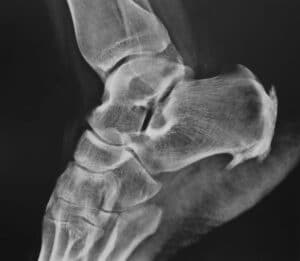
The Breakdown of Haglund’s Deformity Surgery Cost
Haglund’s deformity is a bony protrusion on the back of the heel. This podiatric condition is a result of calcaneus
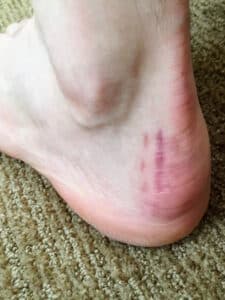
What to Expect – Haglund’s Deformity Surgery Scar
Haglund’s deformity or syndrome is a protrusion on the back of the heel caused by an enlargement of the calcaneal

How Long Does Haglund’s Deformity Surgery Tak
Haglund’s deformity, also known as Mulholland deformity, is a bone and soft tissue abnormality on a person’s heel. It causes

Managing Pain After Haglund’s Deformity Surgery – What to Expect and Tips for Relief
Make the recovery phase after Haglund’s deformity surgery a breeze. Learn tips and tricks for managing pain after Haglund’s deformity

What to Expect After Haglund’s Deformity Surgery
When Haglund’s deformity proves to be resistant to all non-surgical remedies, such as changing footwear, anti-inflammatory drugs, and physiotherapy, surgical

Can Haglund’s Deformity Recur After Surgery? Understanding the Possibilities
When it comes to some of the most stubborn health issues, foot conditions are at the top of the list.

Haglund’s Deformity Post Surgery: A Comprehensive Guide
Each surgical procedure has a unique recovery period, no matter how minimally invasive it is. There will be certain things

What Are the Main Haglund’s Deformity Surgery Risks? An In-Depth Overview
As with any other medical procedure, Haglund’s deformity surgery comes with its own set of risks and potential complications. Before

Returning to Running After Haglund’s Deformity Surgery – A Guided Journal
When can you return to running after Haglund’s deformity surgery? Physical therapy and a smooth recovery process impact how soon
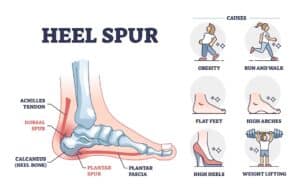
Dorsal Heel Spur Surgery – Procedure, Recovery, and What to Expect
Dorsal heel spur surgery is a procedure that alleviates irritating symptoms caused by heel spurs that develop on the back

Understanding the Costs of Laser Corn Removal
Alleviating discomfort and nagging pain caused by corns on the patient’s feet has never been easier to do. Removing painful

Minimally Invasive Hammertoe Surgery Cost – An Informative Guide
Do you need pain relief from a bent toe joint? Fortunately for many patients, there is a minimally invasive surgery